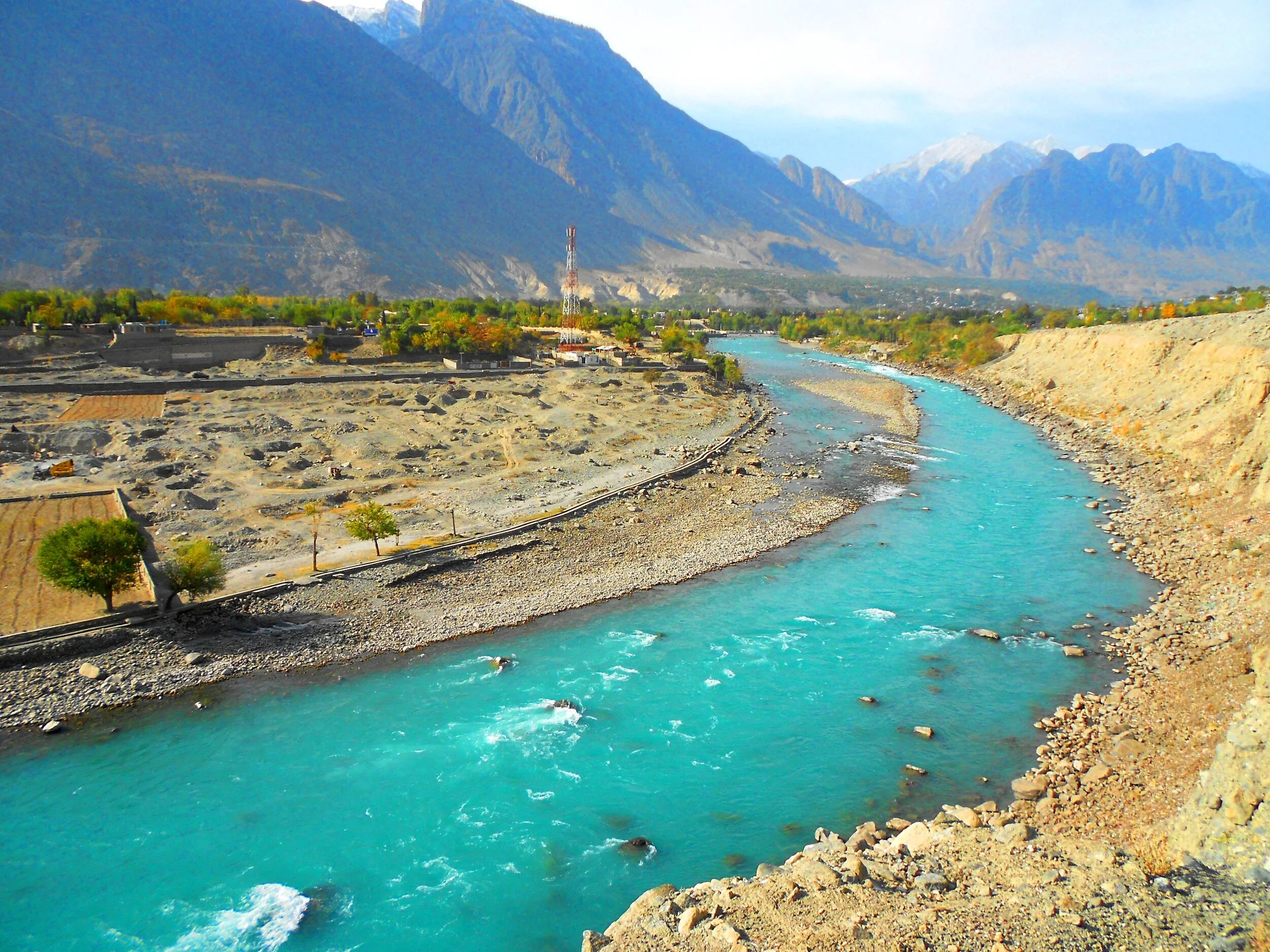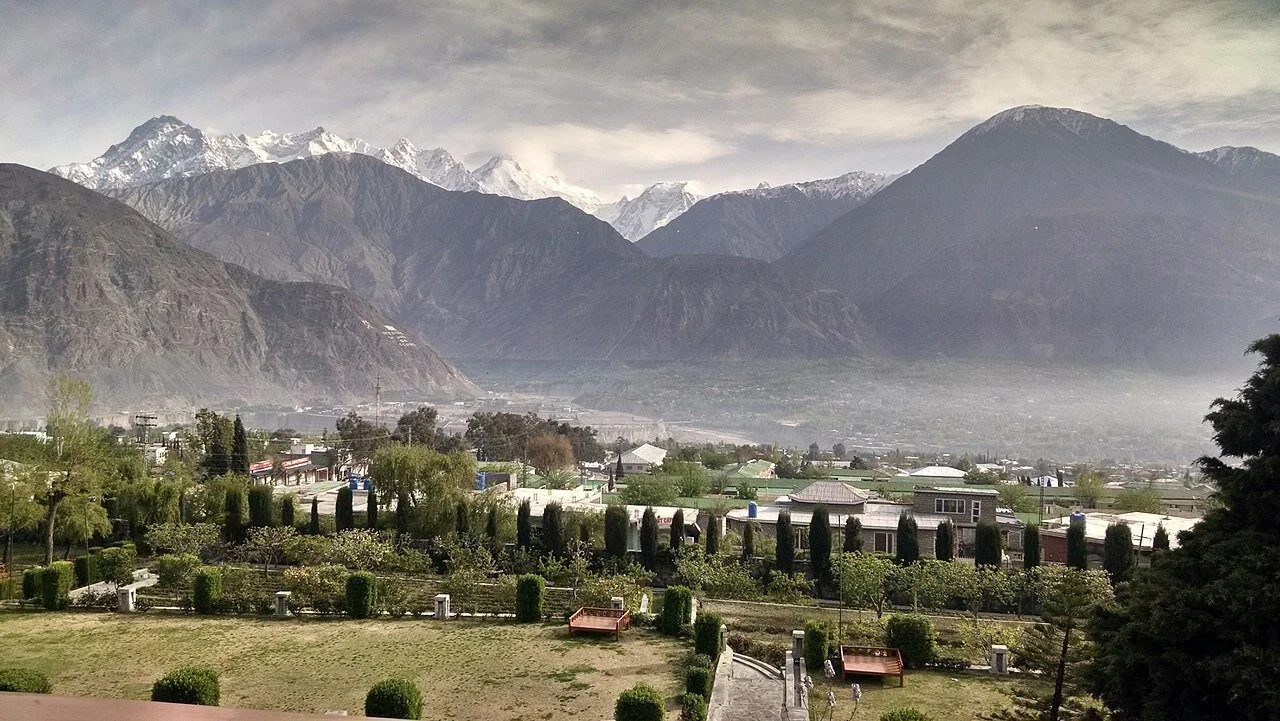The Gilgit Game
Gilgit used to be a part of the Riyasat E Jammu Kashmir till it was occupied by Pakistan in 1947 and formed what was called the Northern Areas. A few years back it was made a “Province” along with Baltistan and re-named as Gilgit Batistan.
Gilgit lies in a Region which consisted Dardic populations and this was also called Dardistan. As per the Gazetteer of Jammu and Kashmir the district of Dardistan consisted of the following sub-divisions : Astore, Bunji, Chilas, Gilgit, Hunza, Nagar, Punial, Yasin and Chitral. On the whole the areas was called the Gilgit Wazarat and Gilgit was the main town.
Anyone familiar with the Geography of the Region would know the strategic location of Gilgit, which forms a vast valley around the point where the Gilgit and Hunza River meet beyond the Great Himalayan Range at an altitude of just 1500 m. It was bound from the North on one side by the Karakoram Range and on the Western side by the Hindu Kush. Its location particularly later in history was one of immense importance once the Great Game started between Tsarist Russia and Imperial Britain. Before the Great Game also its location with access to Central Asia, Afghanistan, Tibet and Kashmir and thereon to India made it an important center of Trade.
Somewhere in Hunza
The history of Gilgit is mostly obscure but at some point of time Buddhism held sway here and it was Ruled by the Patola Shahis. Gilgit was a great center of Buddhist learning and many pieces of Budhist religious iconry and Manuscripts like the Gilgit Manuscript have been found here. It was from Gilgit that many Buddhist Monks went further into Central Asia to spread the message of Buddha. However at some point of time Buddhism declined like in other places in North India and the Tra Dynasty came into power after a brief period of Tibetan and Chinese Rule in the region.
The names of the Ra Dynasty (The King was called Ra), who were Hindus (but some claim Hindu) is largely unknown except for the last one who was called Shri Badut. This Shri badut was apparently and cruel man and said to be a Cannibal as well. He was apparently killed by a Persian prince who married his Daughter and became the first Muslim ruler of Gilgit. The death of Shri Badut is still celebrated in Gilgit. The name of the Ruler hence was changed from Ra to Trakhan and its the Trakhan Dynasty which continued to Rule Gilgit for many centuries to come. And it continued to rule well into the starting of the 19th century.
As per the Kashmir Gazetteer of 1890 : “The history of Gilgit that is, its reliable history-does not go back further than the commencement of the present century, when it was conquered by the Yasinis under Suliman Shah, Khushwaktia. Azad Khan, of Payal or Punial, displaced the Yasinis, and Tahir Shah of the Nagar family overturned the Payali Raj. Tahir left Gilgit to his son Sikandar Khan, who was ousted by Gauhar Aman of Yasin about 1841. There upon Karim Khan, brother of Sikandar Khan, sought aid from the Governor of Kashmir,who, with the sanction of the Lahore darbar, sent a force of 1,000 men under Nathu Shah to assist him. In the meanwhile Sikandar Khan had been murdered; so Nathu Shah, feeling doubtful of success, sent for reinforcements. When these arrived, he assaulted the Fort and took it by storm. Gauhar Aman, ou hearing of this, fled precipitately to Mastuj. "
Gilgit River
From then on Gilgit became a part of the Sikh Kingdom and subsequently the Dogras. However it was not as easy as I am making it sound. There were multiple rebellions and it was during one such incident that Nathu Shah who was the Governor of Gilgit was killed. In 1856 again the Sikhs took Gilgit only to be relieved of it in the successive by Gauhar Khan. It was only after the 1857 and the First Mutiny that Maharaja Ranbir Singh sent a force to recover the country in 1860. In 1863 they rose again and another expedition was sent to Yasin. In 1866 Hunza was attacked by the Dogras along with their Nagar allies, but a trick was played on the Dogras and they were routed. A general alliance was formed against the Dogras by the Chitralis, Yasinis, Tangiris, Darelis and Hunzai and Punial was taken from them. However the Dogra garrison of 2500 at Gilgit held out and then reinforcements arrived and the Dogras re-claimed Gilgit and the surrounding country. Punitive missions were done and the status of Gilgit as an inevitable part of the Riyasat was finalised.
And by this time the Great Game had heated up and the Russians were right across the Hindu Kush and were almost at the Wakhan. This let the alarm bells ringing in the Empire Where the Sun Never Set. The British wanted to have greater influence on Gilgit and convinced the head strong Maharaja Ranbir Singh to let them station an Officer On Special duty to Gilgit in 1877. Gilgit was now the main listening Post in the Great Game and not far from there were the feared Cossacks of the Russian Army. After the death of the Maharaja the British appointed a Political Agent to Gilgit and effectively took over the administration of Gilgit. Gilgit Agency as it was called effectively became British and only in name was under the Maharaja’s rule. All the other neighbouring states were also slowly absorbed into the Gilgit Agency. Chitral was however made a part of Malakand Agency in NWFP. In 1935 the British leased out Gilgit from the Maharaja settling any doubts over Gilgit’s status.And so it stayed till Independence when the British on their return reverted Gilgit over to the Maharaja.
Gojal, Hunza - Nagar
It was now that the “Gilgit Rebellion” took place. The British left and the JK State took charge and Brig Ghansara Singh was appointed the Governor. The Gilgit Scouts, a regiment created by the British comprising of locals were incited by none other than their British officers to rebel and on 1st November after the Maharaja signed the Instrument of Accession they broke out in revolt. Both Brig. Ghansara Singh and his second in command Col.Majid were arrested by the Gilgit Scouts. And then the inevitable happened and the Non-Muslim population was put to the sword. The madness of the sub-continent spread to Gilgit as well. And of course the majority of the Population also wanted to be a part of the new nation on the West. The matter was thus settled for the time being. The same Gilgit Scouts moved further and sieged Skardu and captured kargil and even went as far as Zanskar.
The question remained as to why the British officers openly supported and even planned the whole operation. It was a Military Coup and no civilians took part. And even more strangely the British were eager that Gilgit be a part of Pakistan. The reason for the same was actually quite simple. The British as well as the Americans still wanted Gilgit as a base. The approach to Gilgit from Srinagar was mainly through the Burzil Pass which connected Guraiz with Gilgit. And then there was the Rajdhan Pass. Both these Passes were blocked for snow in the Winters and the Burzil would stay shut for atleast 6 months in a year. On the other hand the approach to Gilgit from NWFP was much easier and through an all Weather Road. Secondly the “Allies” were aware that they would be in a better position to influence Pakistan rather than India due to obvious reasons. And hence the whole operation planned and implemented. It was one of the smaller Games of the Great Game and is called by some as the Gilgit Game. There are many detailed writings on this so get a copy if you want more details.
A view of the Gilgit Town and Valley. Image Courtesy Wikipedia
A pic of the Gilgit Town and the vast Valley surrounding it which made it perfect for an Airbase among other things. The Soviet union was just minutes away by flight. Pic courtesy Fehd Raza. Summer months.





